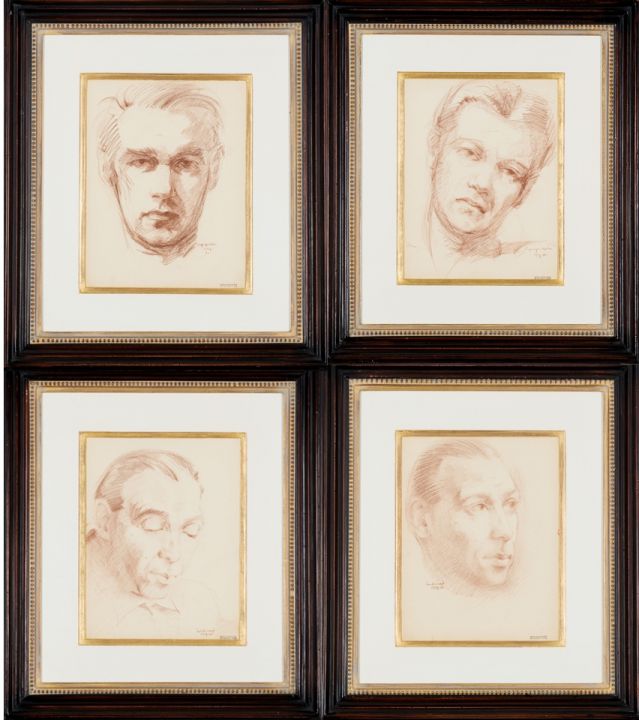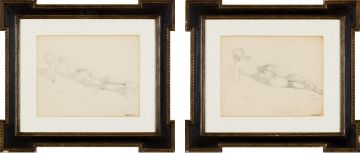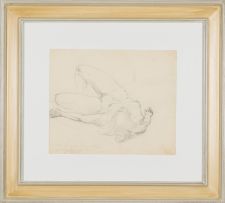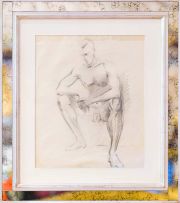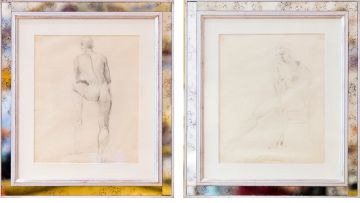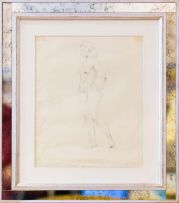Monarch Hotel
Live Virtual Auction, 5 February 2020
Session One
Incl. Buyer's Premium & VAT
About this Item
each signed with the artist's initials, dated 1947, inscribed with the place where the work was created ('Uppsala' or 'Lidingö') and stamped 'Kalahari'
Notes
Room 403
The Kalahari Studio was the brainchild of two Eastern European immigrants to South Africa, Aleksanders (Sacha) Klopcanovs (1912-1997) and his wife, Elma Vestman (1914-1991).
Klopcanovs was born in 1912 in Tashkent, the capital city of the present-day Uzbekistan. In 1932, after compulsory military service in the navy, Klopcanovs entered the Academy of Fine Arts in Riga, Latvia, where he met Vestman, and studied figurative painting, mural painting and sculpture. Vestman was born in 1914 in Lubana, in the Vidzenes Seta province of Latvia.
Stalin's Soviet troops and, later, the German army, invaded the Latvia during World War II and to escape the political upheavals the couple fled across the Baltic to Sweden in a dilapidated fishing boat in 1944. In Sweden, Vestman and Klopcanovs continued their studies at the Royal Academy of Arts in Stockholm. Klopcanovs specialised in figurative painting and Vestman in ceramics.
In 1947 Vestman was employed by the Linnware Studio, at Olifantsfontein outside Johannesburg, on a six-month contract. Klopcanovs followed in February 1948. Later that year, Klopcanovs and Vestman left Linnware and set up the Kalahari Studio in Bramley, Johannesburg. In July 1950, the couple relocated the Studio to Cape Town.
Vestman chose the name Kalahari as it reflected the desert tones and the terracotta colour of the earthenware clay that the studio used. Klopcanovs was a painter and claimed that he was responsible for all the designs, while Vestman was the ceramist. A variety of clays were used, including red-, yellow- and white-bodied clays, but it appears that terracotta clay was used most frequently.
The studio participated in numerous select international and local exhibitions in the United States of America, England and the former Rhodesia (now Zimbabwe). In 1955, it participated in three significant exhibitions, including the Exposition Internationale des Chefs d'Oeuvre de la Ceramique Moderne, Cannes, France, where the studio won three awards, including two gold medals. In South Africa, the Kalahari Studio supplied only fashionable and expensive department stores and gift shops, for example, the Kottler Gift Shop at the Mount Nelson Hotel and Stuttafords. Kalahari Studio wares were exported to the former South West Africa (now Namibia), Rhodesia (now Zimbabwe), the Belgian Congo (now the Democratic Republic of Congo), the United Kingdom, the United States of America, Japan and Switzerland.
Despite his involvement with the Kalahari Studio, Klopcanovs's primary interest was oil painting, and he participated in numerous solo and group exhibitions in South Africa between 1961 and 1973. During this period, he sold paintings in Sweden and the United States. Two of Klopcanovs' paintings are in the Museum of Modem Art (MOMA), USA. Klopcanovs' oil paintings of the 1950s and 1960s are primarily figurative, although landscapes were also undertaken. His large canvases usually depicted seated, supine, naked and scantily clad women, often in a single, pastel tone.
In 1989 the couple retired to Franschhoek, Western Cape Province, where they offered art classes. Vestman died in 1991 and Klopcanovs in 1997.
Source: Adapted from Wendy Gers (2000) South African Studio Ceramics, c.1950s: The Kalahari Studio, Drostdy Ware and Crescent Potteries, unpublished MA dissertation, University of Natal, Pietermaritzburg.
View all Aleksanders Klopcanovs lots for sale in this auction
